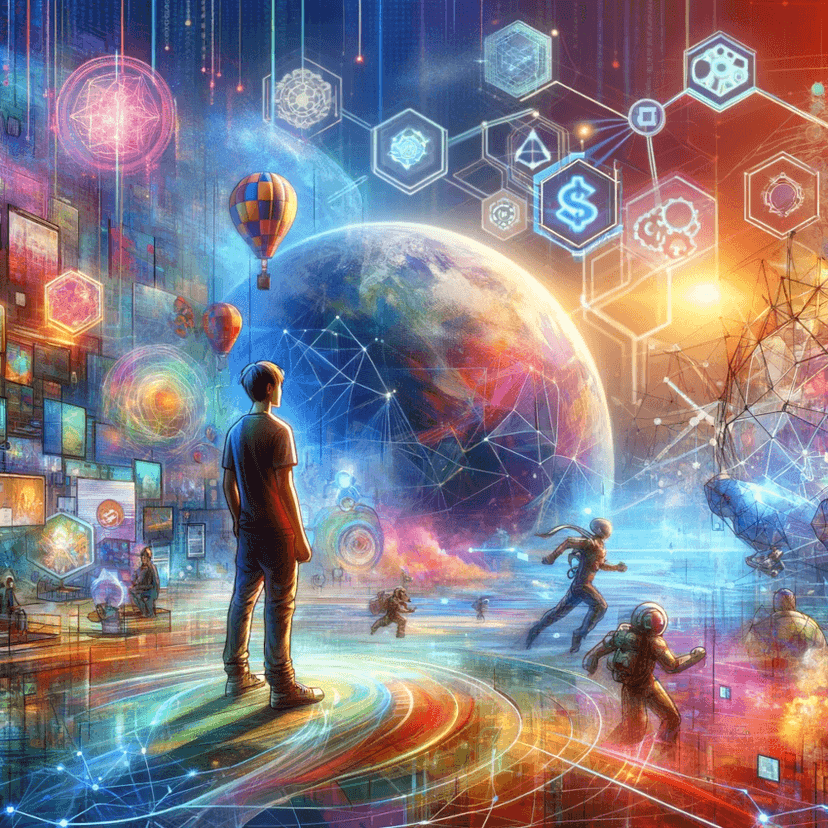Published August 1, 2022

The ownership of unique digital assets is a growing trend in the modern digital world. From collecting rare video game characters to owning limited edition artwork, non-fungible tokens make it possible for these digital assets to have value and be owned by individual users. Non-fungible tokens (NFTs) are a type of virtual token that represents something unique. Unlike fungible tokens like ETH or BTC, NFTs can have their ownership tracked and are individually unique. This makes them perfect for representing something like ownership of an artwork or a video game character where there can only be one of each in the world, not just 20 copies of the same one. In this article we’ll go over what NFTs are, how they work, and some examples of projects using them. In future articles we will learn how NFTs are evolving to represent both Non-fungible and fungible tokens.
What is a Non-Fungible Token?
To understand Non-fungible tokens, it is helpful to first understand Fungible tokens. Fungible tokens are divisible and non-unique. Fiat currencies like the dollar are fungible: A $100 bill in Dallas represents the same value as in Pittsburgh. A fungible cryptocurrency like Bitcoin is one that is valued the same no matter where it originates. A fungible token can be swapped for another identical token of the same denomination. On the other hand, a non-fungible token (NFT) represent one unique and indivisible item whose individual units all have different properties. In some cases, these properties are intrinsic to the token, such as the token being a specific artwork, or a token representing a portion of a company’s equity. In other cases, these properties are assigned to the token, such as an in-game item or a gift card, whose individual unit properties are usually tracked by a centralized database. Tokens that are not fungible can be difficult to trade, and may require intermediaries that can verify their authenticity, or provide a chain of provenance. Blockchain technology provides a solution to this problem, as it can be used to create a distributed database that stores information on each token’s properties, and can provide a cryptographically verifiable chain of ownership.
How Does a Non-Fungible Token Work?
NFTs can be bought or sold and traded just like other digital tokens, except for their rare nature. Blockchain networks like Ethereum allow for tokens like NFTs to be tracked and traded across a network. The ownership of an NFT is verified and recorded by the network’s blockchain. This record of ownership contains information like who owns the token, on what date they bought it, and how much they paid for it. This information is stored in the blockchain and cannot be changed, only added to as more information is provided.
Examples of NFTs in the Real World
As we mentioned earlier, NFTs are most commonly used to represent unique digital assets. For example, a collectible card game might create unique cards that can be bought, sold, and traded among players. These cards could be represented as NFTs with a specific set of information associated with that card. Cards could have information like the card’s owner, the date the card was created, the edition of the card, and the card’s rarity. This information is stored permanently on the blockchain and is associated with that specific card. These cards could be sold, traded, or given away as gifts. There can only be one card with a specific set of information. If two people own the same card, the blockchain would show both owners.
How to Buy and Sell NFTs?
NFTs can be bought and sold through cryptocurrency exchanges or in online marketplaces like OpenSea, Rarible, etc like other digital tokens. They can be bought for fiat currencies like the US dollar or for cryptocurrencies like ETH or BTC. Once the tokens are bought, they are held in a digital wallet and can be traded or exchanged for other tokens. Tokens can be transferred from one person to another. The transfer is recorded on the blockchain of the token’s network, and the new owner can see that they own the tokens.
Limitations of NFTs in the Real World
NFTs are a great way to represent unique digital assets that can’t be copied or reproduced. They allow for unique digital collectibles to be created and traded among users. However, there are some limitations to what NFTs can do. - If you choose to invest in NFTs, you should be aware of their limitations: NFTs are not an asset class; rather, they are a technological method to indicate ownership. Additionally, just like photographs can be copied, digital photos can also be duplicated and appear identical to the original. The proliferation of unlimited copies of fine art has caused confusion and perplexity in the art world. Is there any reason to spend a lot of money on the original if people can download thousands of copies from it? It's clear that digital artworks are virtually identical to traditional masterpiece artworks. The only Mona Lisa that still exists is the one that was painted by Leonardo da Vinci. There are, however, no restrictions on the number of copies that may be produced. It's the same with non-fungible tokens (NFTs): only one individual can own the original.
Final Words: Are Non-Fungible Tokens the Future?
With the growth of the digital token economy, NFTs have become a popular way of representing unique digital assets. When you own a NFT, you own something that is truly one of a kind. While NFTs are used to represent things like artwork, collectible cards, and in-game items, they can be applied to represent any rare item. With blockchain technologies like Ethereum, it’s possible to create NFTs that can be verified and traded on a network. This makes it easy to track ownership, transfer tokens between users, and create a trustless system.



